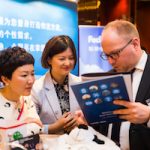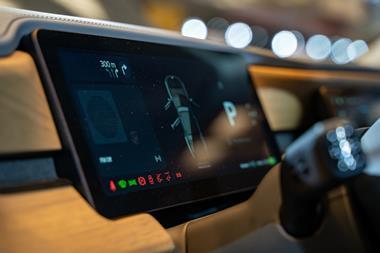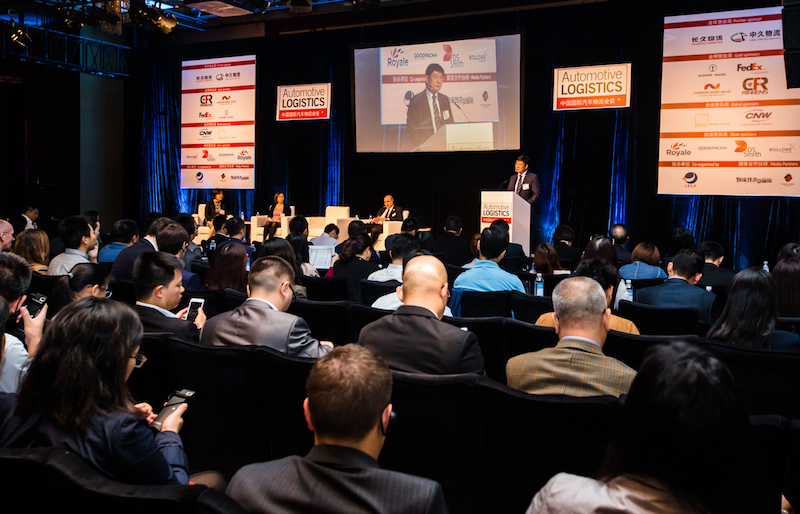 China has the biggest car market in the world and is expected to make 25.3m vehicles this year. The city of Chengdu has 4.5m of them driving around it, making it the second largest in China for vehicle numbers behind Beijing – and it was to Chengdu that delegates headed last week for this year’s Automotive Logistics China conference.
China has the biggest car market in the world and is expected to make 25.3m vehicles this year. The city of Chengdu has 4.5m of them driving around it, making it the second largest in China for vehicle numbers behind Beijing – and it was to Chengdu that delegates headed last week for this year’s Automotive Logistics China conference.
There are a number of issues related to policy and manufacturing investment that are putting China in a strong position to grow its domestic automotive market further while at the same time becoming a major global exporter of parts and vehicles over the next five years.
Overall the economy has settled into a period of steady growth with its GDP increasing 6% annually and it is likely to stay at around that level until 2020.
The automotive industry is growing roughly in line with that at 6-7%, a hard-won result given the increase in the purchase tax rate from 7.4% to 10%, according to Huang Yumei, vice-director of the Information Resources Development Department at China’s State Information Centre.
In terms of policy, China’s One Belt One Road economic and trade plan, which is designed to boost infrastructure and trade links with Europe, Central Asia and Africa, has already led to a rapid growth in exports. Last year the country exported 923,000 vehicles, an increase of more than 30% year-on-year, according to figures from the China Automotive Technology and Research Centre (CATRC). CATRC’s director of policy research, Wu Songquan, said China had seen 14 consecutive months of growth since January 2017.

“We all know that the Belt and Road initiative is an important driver for international cooperation in capacity,” said Wu. “Last year we collaborated with the China Industrial Information Bureau in terms of car exports. They also said that the Belt and Road initiative will greatly boost the car exports.”
One notable market for exports of vehicles from China under the Belt and Road initiative is Iran. Last year, China exported 250,000 vehicles to the country – up 60% on the previous year. China retained links with Iran during the sanctions first imposed on the country in 2010 by a number of western powers, something that has been of benefit now that Iran’s market is rebuilding itself following the lifting of the sanctions in 2016.
Chile, Mexico and Vietnam are also in the top five export countries for China but so is the United States, which last year took in 50,000 vehicles and is also one of the main developed countries to which China sends automotive parts.
Trade war a limited threatThe threat of a looming trade war between China and the US has raised fears that the export of cars and parts to the latter could be cut. However, according to Wu, even if the trade war went ahead – something he doubted – the majority of parts exported fall outside the US’ list of products to be taxed.
“The taxation list only targets the hi-tech and high-value automotive parts, so the majority of parts are not covered,” said Wu. “The US has been smart because if they limited all the imports from China, that would badly affect their own market.”
The same goes for the export of vehicles, said Wu, with the majority of those exported from China – as many as 500,000 – not included in the US list of vehicles to be taxed. China’s number one exporter is GM’s joint venture with Shanghai Automobile – SAIC-GM – and Buick models are sent to the US.
Speakers at Automotive Logistics China largely felt US policy was running contrary to the development of a global economy, while in contrast, China was opening up and pursuing more positive trade policies abroad.
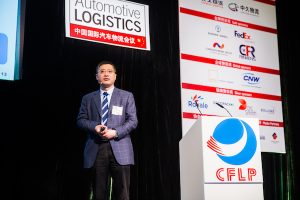 Wu Songquan, director of policy research at the China Automotive Technology and Research Centre
Wu Songquan, director of policy research at the China Automotive Technology and Research CentreThe country has already committed to the lowering of import duties on foreign vehicles. Speaking at the recent Boao Asian economic forum, China’s president Xi Jinping said the government would reduce its current 25% duty on foreign-made vehicles as part of wider efforts to increase imports and reduce its trade surplus with other countries.
Speaking at last week’s conference, Huang Yumei forecast that import duty would be reduced to 15% over the next five years, something that would give China a competitive edge for imports of vehicles and parts.
Huang said the US was taking a backward direction in terms of international trade while China was moving ahead and further opening its market to the world, something she described as a “mega-trend” for the country. This point was backed up by Zhang Xiaodong, associate professor at Beijing Jiao Tong University, who compared president Xi's comments at the recent forum, that China would only open its door further to the wider world, with the rise of protectionism in the US and Europe, and the more serious concern of trade friction developing because of it.
However, along with a number of speakers at the conference, Huang said frictions in trade policy between China and the US had relaxed somewhat last week, though they would probably not disappear entirely.
“In a macro framework, China is pushing ahead with its One Belt, One Road initiative and the international status of China is on a constant rise,” she said. “Trump puts the US interest first so there is a trade dispute … but eventually there might be some sort of concessions between US and China.”
Ending of equity restrictionsChina’s policy on relaxing equity restrictions for foreign carmakers will have a major impact on the country’s position as an exporter of vehicles. For the last two decades, China has restricted foreign carmakers wishing to manufacture in the country to doing so only as part of a joint venture in which they can own a maximum of 50%. Foreign carmakers have also been restricted to a maximum of two JVs making the same category of vehicle in China. Over those two decades, a great many joint ventures between Chinese national and foreign firms have been established, including BMW Brilliance Automobile, FAW-Volkswagen and SAIC-GM.
These restrictions, which have resulted in foreign carmakers making cars mainly for the domestic market, are now being removed following a policy proposal introduced last year by the National Development and Reform Commission (NDRC) in China, and more recently endorsed by president Xi Jinping at the Boao Asian economic forum.
“Within five years, full equity restrictions will be lifted and China’s automotive market will open to global competition, which is an opportunity for the country and for the industry as a whole,” said Cai Jin, vice-president of the China Federation of Logistics and Purchasing (CFLP).
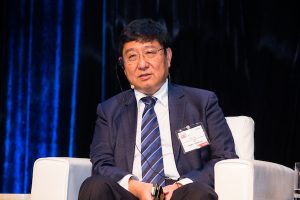 Cai Jin, vice-president of the China Federation of Logistics and Purchasing (CFLP)
Cai Jin, vice-president of the China Federation of Logistics and Purchasing (CFLP)Once foreign carmakers start making lower cost models in China for export, production in the country is expected to boom. According to figures from the CATRC, the number of exports could hit 5m in 2025 – a vast increase on last year’s 923,000.
Concerns about the potential impact on domestic Chinese carmakers of an influx of foreign brands unfettered by equity restrictions looking for a cheap production base for their own models were met calmly, however.
Huang Yumei at the State Information Center said the equity restriction cap would be phased in toward 2025 and that China’s own brands had been developing the quality of their products rapidly, with Geely, to take one example, popular both at home and abroad. She said new sales channels had been popular for the domestic industry and foreign competition would further incentivise the development of their vehicles despite the near-term pressures.
Lang Xuehong, deputy general secretary and director of the industrial coordination department at the China Automobile Dealers Association (CADA), went further, suggesting that domestic companies welcomed the policy change which was opening up competition, and pointing out that the 50:50 joint venture policy in place for the last 20 years had actually been hindering organisational efficiency. Loosening that control would provide a new impetus, said Lang.
She stressed that the opening of the market did not mean giving ground to foreign companies. “It won't be one-way traffic,” said Lang. “You will see more participation of Chinese companies in the global market.”
New energy technologyOne other driver for export growth is China’s dominance as a producer of ‘new energy’ vehicles (NEVs), including electric and hybrid ones.
China is the world’s number one producer of NEVs and owns more than 50% of the global capacity for NEV production. The top Chinese carmakers involved in NEV development include BYD, BAIC and SAIC. The country made 770,000 vehicles with alternative powertrains compared to the US’ 200,000 last year, according to Wu Songquan, and that was thanks largely to government support through taxation policy on NEV production.
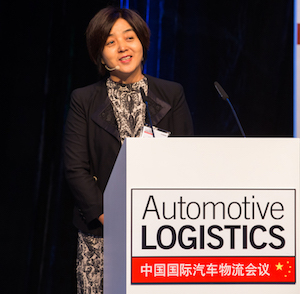 Lang Xuehong, deputy general secretary and director of the industrial coordination department at the China Automobile Dealers Association (CADA)
Lang Xuehong, deputy general secretary and director of the industrial coordination department at the China Automobile Dealers Association (CADA)“The innovation, value and skill in China is high and the country is leading in NEVs,” said Wu. “BYD is going abroad and has lots of investment so we have lots of potential in this area.”
New energy technologies are crucial to the future of China’s automotive sector according the CFLP’s Cai Jin, with sales having at least doubled over the last few months. Cai put the sales increase at 150% per month, describing it as “a sustained and constant phenomenon”.
There are a number of reasons for the drive to increase NEVs in China. Serious pollution in the country, which on the roads is down to low standards of truck fuel, has encouraged a preference for and stricter regulation governing the use of cleaner vehicles, both passenger and commercial, for travel in and between cities.
China is also focused on the construction of a smarter logistics environment and networks are growing in urban areas. Jia Yong, vice-general manager at logistics firm DST Rental, said the advantages of NEV commercial vehicles involved low-cost running and zero emissions for logistics companies. He noted that while trucks fuelled with petrol were not allowed in a number of major Chinese cities including Chengdu, electric delivery trucks were already helping to better distribute capacity across the regions. Jia said NEVs could ultimately help to drive down logistics costs by 40% and boost the profitability of traditional LSPs, which he said was currently on a downward trend.
Achim Glass, head of the global automotive vertical and senior vice-president at logistics provider Kuehne + Nagel, noted that government regulation on a global basis was driving electric vehicle production as countries sought to reduce carbon emissions. The adoption of EVs was also being driven by better technology including battery performance and charging infrastructure, he said, as well as consumer behaviour. Glass referred to figures from analyst PwC Autofacts, which suggested there would be 10m EVs on the road globally by 2020 and that by 2030, 55% of all new vehicle sales would be of fully electrified vehicles.
Distribution channelsNEVs will have an impact on the traditional distribution model for vehicles as vehicle-makers try to emulate Tesla and stay close to the customer with direct sales models, though Lang said many would continue to rely on traditional distribution channels for some years to come, with NEVs sold alongside traditional vehicles.
What will become more important as the direct sales model takes off, however, is that the dealers and service centres enhance the provision of aftersales services. Lang said over the next 20 years, aftersales services would become an ever more important part of the business portfolio for the service centre and it would be up to them to provide a more convenient and efficient aftersales service to the customer to sustain their businesses.
One of the more challenging aspects of the growth in NEVs from a distribution perspective, meanwhile – both for the domestic market in China and for import/export activity – is the battery itself. Lithium-ion batteries, in particular, have significant supply chain risks. They are not like traditional acid or dry batteries and are made of layers of thin foil that, if damaged through impact or overcharging, can short-circuit and spontaneously combust (taking anything up to 48 hours to do so). The problem here is that the fire cannot easily be extinguished, once started. All this makes the transport of such batteries very dangerous and costly.
 Achim Glass, head of the global automotive vertical and senior vice-president, Kuehne + Nagel
Achim Glass, head of the global automotive vertical and senior vice-president, Kuehne + NagelDespite the risks associated with the global distribution of lithium batteries – and 85% of global supply will be coming from Asia – the number of them being moved is increasing steeply. Glass said between 2016 and 2020, global lithium-ion battery production capacity would increase by 521%.
All this means a separate supply chain for batteries is needed – something Kuehne + Nagel, among other logistics providers, is now working to provide.
Multimodal ChinaAs can be seen from the recent news that BMW Brilliance Automobile (BBA) is now using more transport modes to move vehicles to dealers in the Zhejiang and Fujian provinces from its new decentralised distribution area in Ningbo port, China’s carmakers and their logistics providers are embracing a more multimodal approach to outbound delivery.
This to some extent has been driven by implementation of the 1589 (2016) regulation on car carrier trailers, which is taking a lot of capacity off the roads. Only single-row carriers can now operate legally, and limitations on the length of those are being phased in at the moment, although they typically carry 12 vehicles. The next phase of the regulation will seek to eliminate outsized carriers, which will result in a loss per transporter of between three and five units. Failure to conform with the regulations can result in a 15-day detention.
At the same time, China is developing much bigger networks to cover the various modal links required for national vehicle distribution to the 28,000 dealers spread across its vast geography. There needs to be a more rationalised distribution between the modes as well as more decentralised distribution locations, or ‘pre-arranged warehouses’, closer to customers to manage faster delivery.
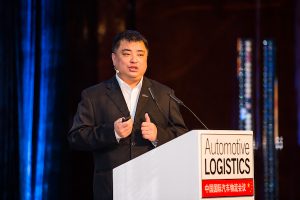 Chen Gang, vice-president of Changjiu Group and general manager of CDC International Logistics
Chen Gang, vice-president of Changjiu Group and general manager of CDC International LogisticsBeijing Changjiu Logistics is the biggest third-party logistics provider in China and has a network that covers the major cities in all 31 provinces in China. That is now being grown to encompass the tier two and three cities. Chen Gang, vice-president of Changjiu Group and general manager of the company’s subsidiary, CDC International Logistics, said the logistics sector was trying to move to a distribution model that moved more vehicles by rail and inland waterway. That is no easy task given that the previous modal split was 80% road, 12% rail and 8% waterway. Going forward, Chen said the split would look more like 53% road, 30% rail and 17% waterways for outbound traffic (excluding last-mile shipments).
Rail to the westBeyond China, rail links to the west and into Europe have grown dramatically over the last few years, with added impetus from the Belt and Road initiative and the government support behind it driving up the level of service for parts and vehicle shipments.
Chen’s colleague Yi Lei, director and executive vice-president at Beijing Changiu’s International Business Division, highlighted the company’s service for Volvo shipments of the S90 between Daqing in China and Zeebrugge (run in conjunction with China Railway Express). Changjiu has recently renewed the contract to provide the service for another two years.
Zhong Cheng, deputy general manager of China Railway Express (CR Express), said the rail provider was now responsible for 85% of total exports of cars and parts moving to the west and that overall so far, it had run 300 trains carrying finished vehicles and 25,000 containers of parts. As well as its provision of trains for the Volvo S90 shipments, CR Express is moving Lifan and Dongfeng vehicles along the countries involved in the Belt and Road network.
Zhong said CR Express had established three rail channels running from China’s west, central and eastern regions to the west. “There are now a total of 65 railway lines and the fastest train takes 12 days to reach Europe, with 99.7% of the trains arriving on time,” he said. However, as a freer market develops in China CR Express could see greater competition for services and will have to find investment as the subsidies that support it now are gradually removed.
CR Express connects to 20 stations in China, of which Chengdu is the biggest. Chengdu inland railway port is central to developments for the movement of vehicles and parts between China and countries to the west. It has the largest container rail port in Asia according to Sun Lin, from Chengdu International Railway Port. Chengdu is the first inland port that provides integrated direct transport on rail as well as inland waterway. It is home to the only railway port for cargo transport in Sichuan province, has a bonded logistics centre and also boasts the largest container logistics park in China.
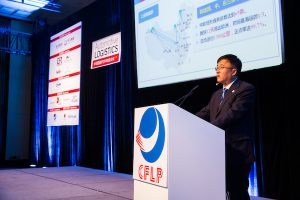 Zhong Cheng, deputy general manager of China Railway Express
Zhong Cheng, deputy general manager of China Railway ExpressAmong the services to Europe it supports is the one handling Volvo S90 containerised vehicle shipments, and it is now working on a solution for VW shipments into China. Sun said trial shipments to Germany had been completed and that it was now working with VW to develop containerised vehicle shipments from there back to China via the Chengdu International Railway Port.
Data brings revenueAs multimodal connections between China and the rest of world develop, the complexity of the networks being developed along the Belt and Road routes globally (and within China) will require a higher level of IT support; that means greater integration of that function within the company.
Balakrishnan Adhi, deputy director, MP&L at Changan Ford, said IT was no longer an independent division and had to be embedded in the business because it was through better management of data that companies made better decisions to help the customer and generate revenue.
“We see clearly that data brings the revenue,” he said. “A lot of the big data, analytics and digitalisation… is going to help quick decision-making in the future. It is about how we see reports and how we turn the reports from descriptive to predictive, and from predictive to prescriptive – and how quickly we can do it. That is the great opportunity and if we can use this in our logistics business, import or export, that will really help the situation and reduce cost.”
For Xu Guangqing, logistics engineering and operation management director at SAIC-GM, that meant moving from being an IT company to a data technology company and proactively developing in-house solutions. He suggested SAIC-GM was ahead of the industry in this respect.
 Xu Guangqing, logistics engineering and operation management director at SAIC-GM
Xu Guangqing, logistics engineering and operation management director at SAIC-GM“These are not off-the-shelf solutions. You have to develop them on your own and we do that,” he explained. “The development is led by the business unit and communicated to IT. The data technology people need to work with the industry to come up with the software that works.”
Greg Toornman, global director material logistics and freight at AGCO, agreed that getting an advantage in the marketplace was now based on understanding the digital transformation of the automotive logistics business and knowing how to use the data to adapt to change and get the supply chain speed required.
China was in a good position to adapt to this change and position itself as a global automotive producer for the future, according to Ma Zhengrong, vice-president of the CFLP. As with its development of new energy technology in the vehicle and the use of smart telematics in the delivery process, he said China had grasped the most promising technology with support from the government to fuel the growth of the industry. Ma said experts were helping China to succeed and whatever the next technology to be adopted was over the next five years in a fast-changing industry, the automotive logistics sector in China could be leading it.
Automotive Logistics China is part of the global Automotive Logistics series of conferences.
The next conference is The Supply Chain Conference, which will be held May 21-23 in Atlanta, Georgia and run alongside the AutomotiveIT International conference




































